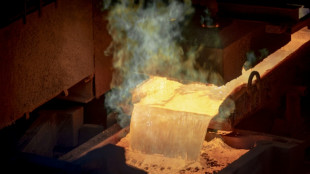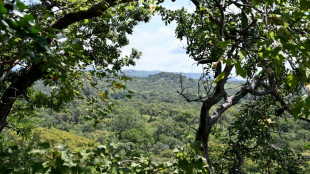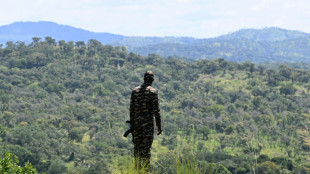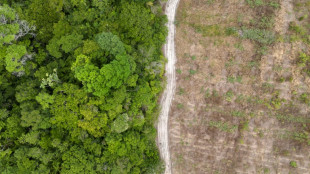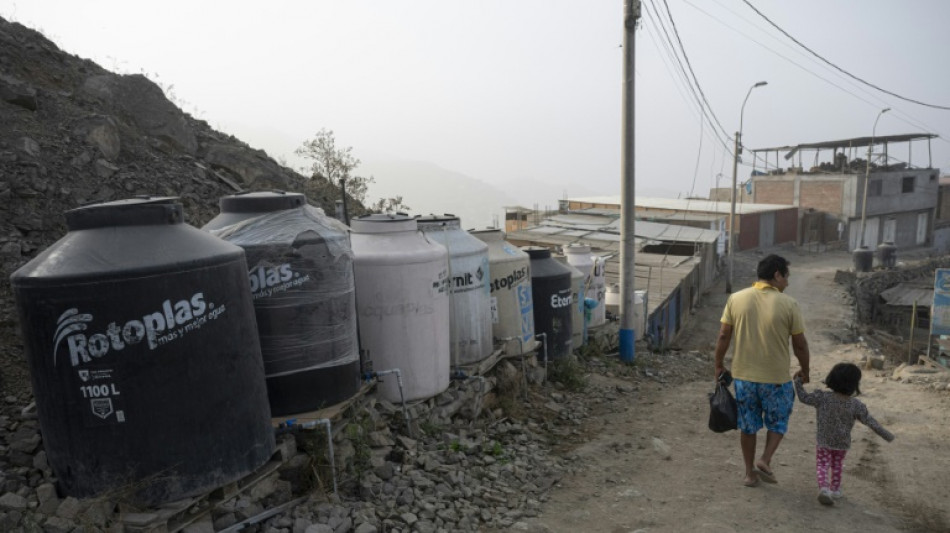
-
 Arteta hails Arsenal's 'exceptional' first half as leaders sink Burnley
Arteta hails Arsenal's 'exceptional' first half as leaders sink Burnley
-
Two more suspects charged over Louvre heist
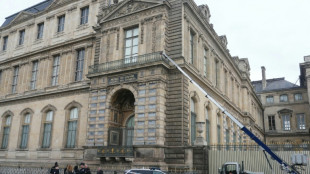
-
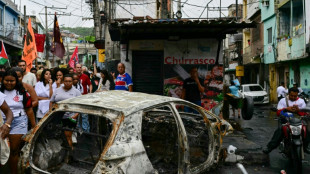 More than $2 mn in weapons seized in deadly Rio anti-drug raid: govt
More than $2 mn in weapons seized in deadly Rio anti-drug raid: govt
-
Feinberg-Mngomezulu guides South Africa to big win over Japan

-
 Pollock shines as England eventually overpower Australia
Pollock shines as England eventually overpower Australia
-
Villarreal crush Rayo to move second, Atletico beat Sevilla

-
 Sinner crushes Zverev to reach Paris Masters final, brink of No. 1
Sinner crushes Zverev to reach Paris Masters final, brink of No. 1
-
Pollock shines as England beat Australia in Autumn opener

-
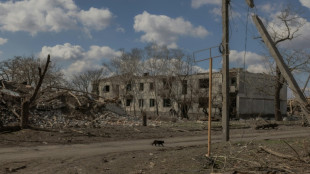 Ukraine sends special forces to embattled eastern city
Ukraine sends special forces to embattled eastern city
-
Arsenal cruise against Burnley as Man Utd held

-
 Pollock shines as England beat Australia 25-7 in Autumn Nations Series
Pollock shines as England beat Australia 25-7 in Autumn Nations Series
-
Gyokeres on target as leaders Arsenal beat Burnley

-
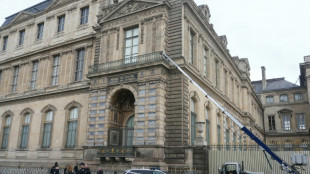 Woman charged over Louvre heist tears up in court
Woman charged over Louvre heist tears up in court
-
Diomande dazzles as Leipzig go two points behind Bayern

-
 Auger-Aliassime downs Bublik to reach Paris Masters final
Auger-Aliassime downs Bublik to reach Paris Masters final
-
Villarreal crush Rayo to move second in La Liga

-
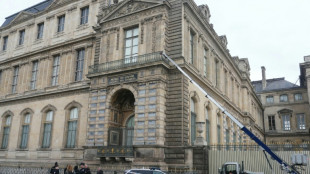 Female suspect, 38, charged in Louvre heist: AFP
Female suspect, 38, charged in Louvre heist: AFP
-
US not sending any high-level officials to COP30
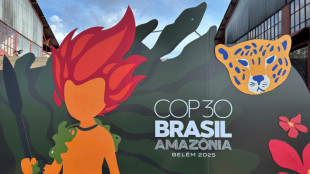
-
 India captain Kaur sees World Cup final as possible turning point
India captain Kaur sees World Cup final as possible turning point
-
'Not out of the woods': What now for Britain's ex-prince Andrew?

-
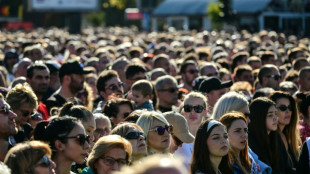 Tens of thousands of Serbians mark first anniversary of deadly train station collapse
Tens of thousands of Serbians mark first anniversary of deadly train station collapse
-
Tanzania president wins 98% in election as opposition says hundreds killed

-
 Vieira 'no longer' manager of troubled Genoa: club
Vieira 'no longer' manager of troubled Genoa: club
-
Tanzania president wins 98% of votes after violence-marred polls

-
 South Korea hosts Xi as Chinese leader rekindles fraught ties
South Korea hosts Xi as Chinese leader rekindles fraught ties
-
England's batting exposed as New Zealand seal ODI series sweep

-
 Funk legend turned painter George Clinton opens show in Paris
Funk legend turned painter George Clinton opens show in Paris
-
Traditional mass wedding held in Nigeria to ensure prosperity
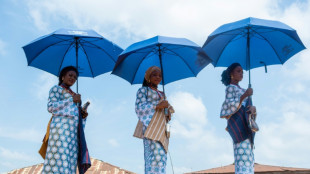
-
 Canada PM says Xi talks 'turning point', apologises to Trump
Canada PM says Xi talks 'turning point', apologises to Trump
-
Iranian tech prodigies battle it out with robots
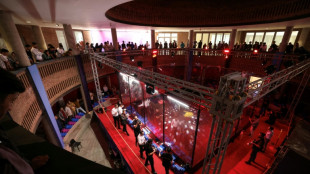
-
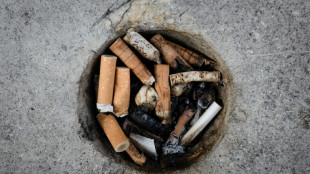 Maldives begins 'generational ban' on smoking
Maldives begins 'generational ban' on smoking
-
Explorers seek ancient Antarctica ice in climate change study
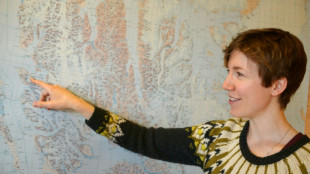
-
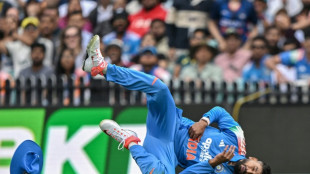 India's Iyer discharged from hospital after lacerated spleen
India's Iyer discharged from hospital after lacerated spleen
-
Serbia marks first anniversary of deadly train station collapse
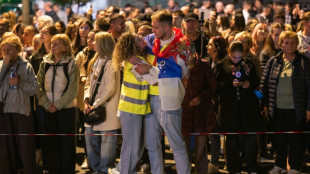
-
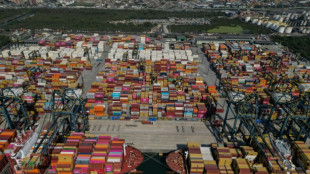 Latin America weathered Trump tariffs better than feared: regional bank chief
Latin America weathered Trump tariffs better than feared: regional bank chief
-
Bangladesh dockers strike over foreign takeover of key port
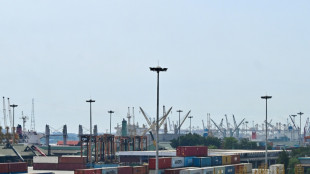
-
 Tanzania president wins election landslide after deadly protests
Tanzania president wins election landslide after deadly protests
-
Dodgers, Blue Jays gear up for winner-take-all World Series game seven

-
 Taiwan's new opposition leader against defence spending hike
Taiwan's new opposition leader against defence spending hike
-
Dodgers hold off Blue Jays 3-1 to force World Series game seven

-
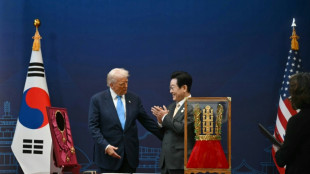 Crowns, beauty, fried chicken: Korean culture meets diplomacy at APEC
Crowns, beauty, fried chicken: Korean culture meets diplomacy at APEC
-
Panama wins canal expansion arbitration against Spanish company
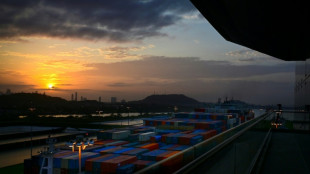
-
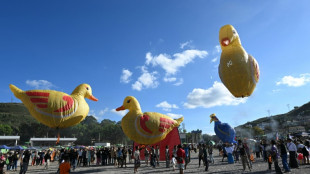 Myanmar fireworks festival goers shun politics for tradition
Myanmar fireworks festival goers shun politics for tradition
-
China to exempt some Nexperia orders from export ban
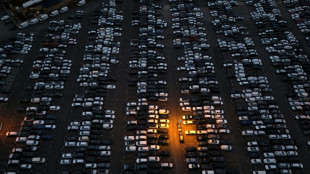
-
 Sixers suffer first loss as NBA Cup begins
Sixers suffer first loss as NBA Cup begins
-
China's Xi to meet South Korean leader, capping APEC summit
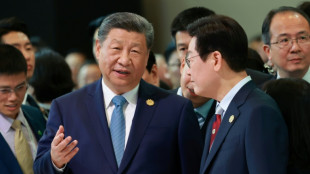
-
 Japan's Chiba leads after Skate Canada short program
Japan's Chiba leads after Skate Canada short program
-
Finland's crackdown on undocumented migrants sparks fear
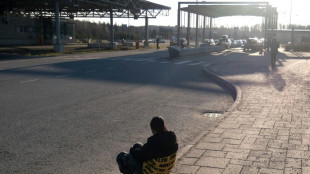
-
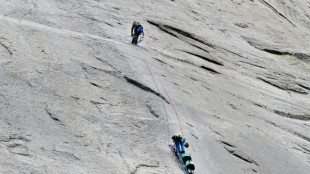 Climbers test limits at Yosemite, short-staffed by US shutdown
Climbers test limits at Yosemite, short-staffed by US shutdown
-
Gstaad gives O'Brien record 21st Breeders' Cup win


In poor areas of Peru's capital, running water is a dream
In the bone-dry hills overlooking Lima, the luxury of running water is just a dream for thousands of Peruvians who get theirs delivered by tanker truck.
Peru's capital, home to more than 10 million people, is also the world's second largest city located in a desert, after Cairo.
It has the Pacific Ocean on one side, the Andes on the other and three rivers running through it, plus a water table. But rain is scarce.
More than 635,000 people in Lima lack running water, says the National Institute of Statistics and Computer Science, and many of them live in informal settlements high above the city, in spots not reached by the water and sewer lines.
Blue tanker trucks bring water for free once a week, sometimes less, to parts of San Juan de Miraflores south of the city, and leave it in large drums placed along its dusty streets.
And these containers are anything but hygienic.
"We get stomach cramps and migraines. There are worms in the bottom of the tank," said Catalina Naupa, a 59-year-old resident of San Juan de Miraflores.
In winter sometimes the trucks do not come at all because the streets become so muddy they are unnavigable, said Naupa, who washes her clothes only once a week or even every two weeks to conserve water.
Nicolas Reyes, who works for the city's water utility Sedapal, says it brings in a cubic meter (260 gallons) of water per family per week.
That comes out to about 30 liters (eight gallons) of water per person each day -- far short of the minimum 50-100 liters that the United Nations says people should have access to.
Year after year, Sedapal fears having to ration water as the rainy season comes and it hopes Peru's reservoirs fill, said Jeremy Robert of the Institute for Development Research, in France.
- 'Another world'-
"Climate change is going to affect water levels in the mountains and reduce the flow of rivers," said Antonio Ioris, a professor of geography at Cardiff University in Wales.
But he said dwindling water reserves are not the main problem, insisting that poor people's tenuous access to water is very low on policymakers' list of priorities.
"The situation on the outskirts of Lima stems not only from a lack of urban planning but also from problems in rural areas that force people to migrate to the city," said Ioris, who specializes in the link between population and environmental issues in Latin America.
Along dirt roads in some areas of San Juan de Miraflores, concrete staircases lead to spots that are even harder to access and cannot be reached by the trucks that bring in water.
So these people get by the best they can, and on average pay six times what people connected to the utility grid pay for water, the government says.
In one hilltop area of San Juan de Miraflores, a water drum blocks the last step of a staircase heading up toward another world.
Up on the peak, a two-meter high, 10-kilometer long (two-yard high, six-mile long) concrete barrier -- people call it the "wall of shame" -- separates San Juan de Miraflores from a rich area on the other side. The idea is to keep poor people out.
Through cracks in the wall one can see the lush vegetation of Santiago de Surco, a Lima neighborhood with one of the highest rates of water consumption -- 200 liters per day per person, according to Sedapal.
There on the other side, thick green grass is fed with drinking water and people rest under leafy trees.
"Surco seems like another world," said Cristel Mejia, who runs a soup kitchen on the poor side of the wall.
T.Zimmermann--VB

